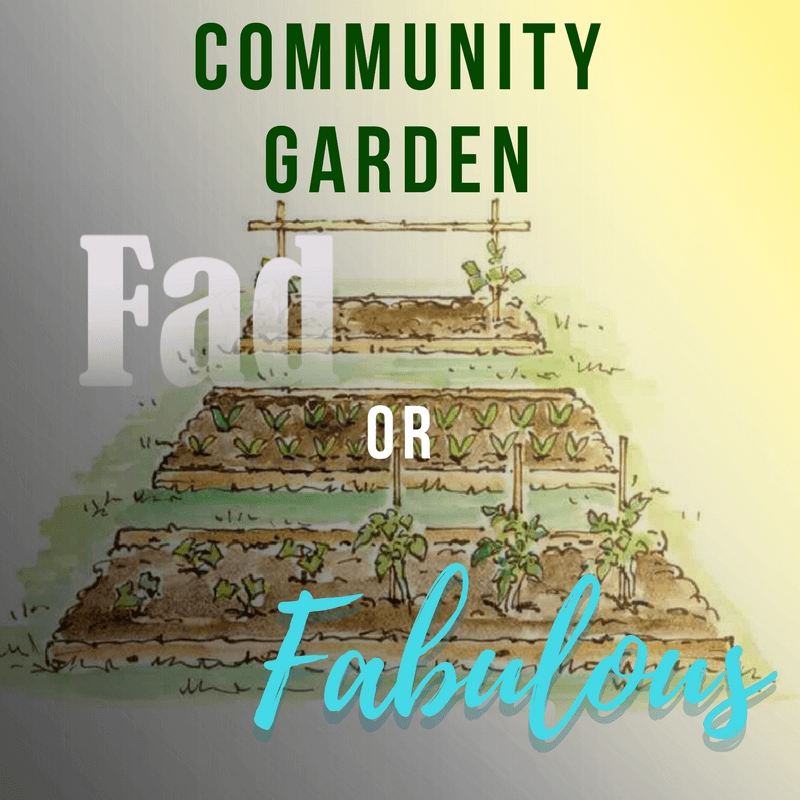Interest in community gardens has increased dramatically over the last decade. Community gardens are commonplace in many urban centers across the country, which may leave some people wondering why they are so popular. In my own experience with a small community garden in Saskatoon, I’ve seen firsthand how the variety of gardening benefits appeal to a wide range of participants. The most obvious benefit is being able to grow high-quality, fresh produce for a reasonable cost. Some urban residents don’t have adequate space or sunlight to garden at home, so we provide an alternative. Plus, the food produced in a local garden often tastes so much better than anything you can buy at a supermarket! One reason for this is that even in summertime, much of the fresh produce sold in local stores is produced in California.
 Gardeners who sign up with a community garden typically pay a small fee for each season and in return, receive a designated space in which to grow whatever they choose (except weeds!). Fees help cover any operating costs such as the delivery of compost or manure, removal of compostable waste, and in some cases, water use. Many people purchase their own seeds to plant, but there are free seedlings available from local charitable organizations and gardeners often donate their extra seeds for general use. Popular plants that many gardeners grow include carrot, tomato, radish, cucumber, potato, bean, lettuce, dill, squash, pumpkin, beet, onion, pea, broccoli, cauliflower, basil, peppers and spinach. The more adventurous among us have grown sweet potato, quinoa, lentil, borage and chamomile. Most gardens also have shared areas that any of the gardeners and even members of the public are welcome to use. The shared areas in our community garden are home to foods that are produced by perennial plants which survive from year to year without the need for re-seeding. In our case, these include raspberry, asparagus, currant, rhubarb, apple, strawberry, mint, sorrel, thyme and tarragon.
Gardeners who sign up with a community garden typically pay a small fee for each season and in return, receive a designated space in which to grow whatever they choose (except weeds!). Fees help cover any operating costs such as the delivery of compost or manure, removal of compostable waste, and in some cases, water use. Many people purchase their own seeds to plant, but there are free seedlings available from local charitable organizations and gardeners often donate their extra seeds for general use. Popular plants that many gardeners grow include carrot, tomato, radish, cucumber, potato, bean, lettuce, dill, squash, pumpkin, beet, onion, pea, broccoli, cauliflower, basil, peppers and spinach. The more adventurous among us have grown sweet potato, quinoa, lentil, borage and chamomile. Most gardens also have shared areas that any of the gardeners and even members of the public are welcome to use. The shared areas in our community garden are home to foods that are produced by perennial plants which survive from year to year without the need for re-seeding. In our case, these include raspberry, asparagus, currant, rhubarb, apple, strawberry, mint, sorrel, thyme and tarragon.
In Saskatoon, our community garden system mandates that food is grown without the use of synthetic pesticides. The food we produce doesn’t require long-distance transportation nor any storage-related chemicals. For many gardeners, these steps in improving the sustainability of our food supply are important drivers of their involvement. In our own community garden, we practise and teach soil and water conservation techniques including mulching, water distribution trenches and minimum tillage. These practises further contribute to the ‘feel-good’ benefits of gardening while making the process less labour and resource-intensive. Beyond these intellectual benefits, for many people gardening feeds their minds and bodies in a way that is difficult to describe. For some, it may be meditative. For others, it may be the value of regularly connecting with nature. Some people love visiting with their neighbours and helping each other in the garden, cementing friendships. Anyone who has overheard gardeners swapping growing tips can appreciate how this can make a gardener’s day (and delay almost any other task at hand!).
Gardening in your local community also gives us the opportunity to learn from people of different backgrounds and to encounter unfamiliar foods. People of all ages come together in a unique way to experience how a garden grows and to enjoy its many flavours, languages and customs. It is not unusual to arrive at the community garden and discover a donated fruit tree or that your plot has already been watered. In the process of gardening together, a sense of community grows and is nurtured along the way.

Cheryl
Armstrong-Cho
Jardin SNP Garden coordinator,
South Nutana Park,
Saskatoon.
Cheryl has been an ardent gardener since a young age. Her passion for plants and nature was nurtured by visits to her grandparent’s farm and garden patch as a child. Cheryl continues this passion in her career as a research officer at the University of Saskatchewan. She studies fungi that attack crop plants, some that also appear in many gardens, like pea, bean, lentil, chickpea, faba bean, coriander (cilantro) and caraway. Her research supports plant breeding programs which aim to improve the disease resistance of crops, making production more reliable and less dependent on fungicides. When she’s not planting or digging something, Cheryl can be found singing, biking, tenting, playing soccer or organizing the neighbourhood green club.


